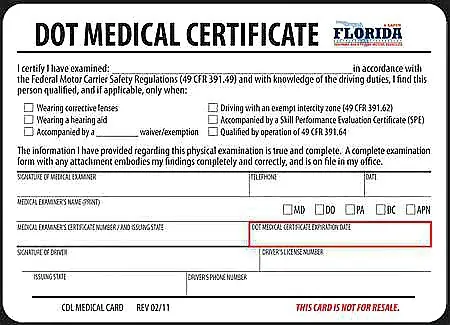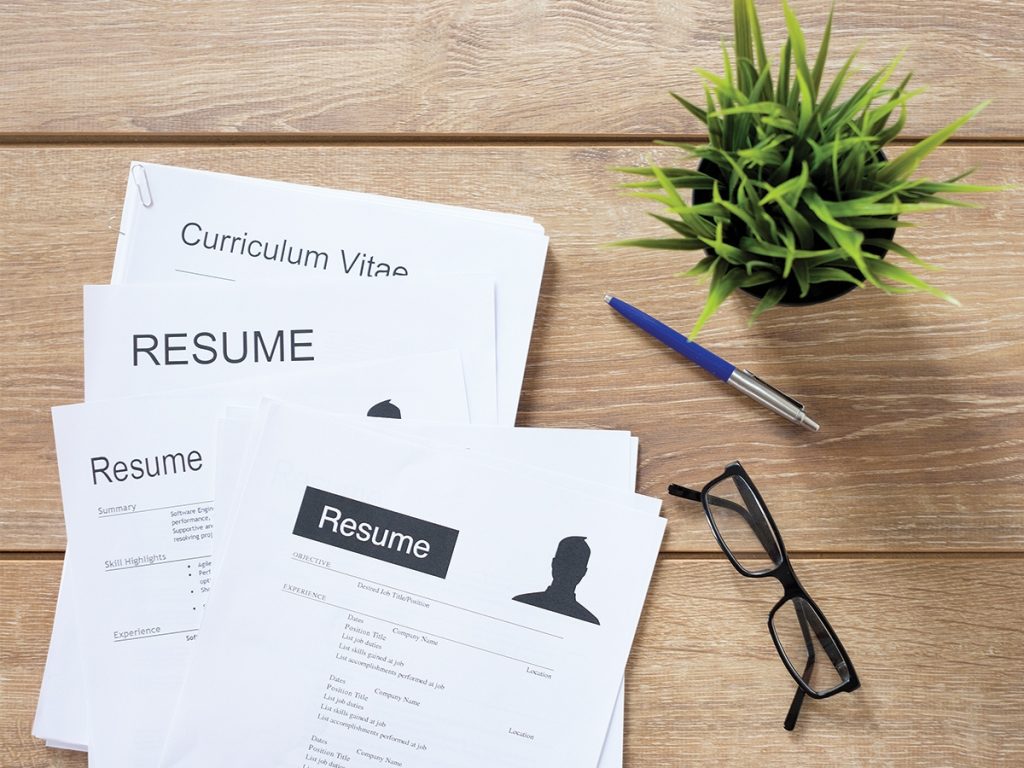Ready to hit the road and drive a thriving career? Our CDL study guide will be your perfect companion in nailing the skills and knowledge that get you a Commercial Driver’s License. From general knowledge all the way to specialized endorsements, we are going to walk you through every step of the CDL permit test and skills tests using practical tips and strategies, along with effective study techniques. Get ready to confidently master everything and unlock a world of professional driving opportunities. With the right preparation, your CDL is within reach!
CDL permit test study guide
Before taking the CDL skills tests, you will have to pass the CDL permit test which includes written exams in general knowledge, combination vehicles, and air brakes.

General knowledge test
The CDL general knowledge test encompasses the broad basics any commercial driver should know, from traffic laws to vehicle safety. Every CDL test-taker is required to do this test. Here’s how to study effectively:
- Identify important concepts to understand: Pay closer attention to the signs that you will encounter on the road, proper vehicle inspection, controlling your speed, and accident prevention. Understand these concepts as they apply to all types of commercial vehicles.
- Use real-life situations: As you are reading a section of information, relate it to real-life situations. Imagine driving down a steep grade or driving in bad weather or responding to a sudden unexpected hazard on the road.
- Memorize key facts: Flashcards and study apps are fast, easy ways to learn and remember important facts, such as tire tread depth requirements or correct following distance.
- Practice tests: The practice tests are good for confidence in understanding and familiarizing yourself with the test format. Pay more attention to questions where you score low and refer back to those areas.
Take the free CDL general knowledge practice test here!
A sample general knowledge question is as follows:

Combination vehicles test
The combination vehicles are generally required for Class A CDL. It is supposed to check your knowledge concerning driving a vehicle with more than one attachment or unit, such as a tractor-trailer. Here’s how you can prepare effectively:
- Focus on coupling and uncoupling procedures: Read coupling and uncoupling procedures for safely connecting and disconnecting trailers, including connections to be checked, locking the fifth wheel, and common mistakes to avoid. This is a very critical part of your test, so pay close attention to specific terms and safety checks.
- Understanding vehicle dynamics: Learn how combination vehicles differ from single vehicles. Be aware of the risk of rollover, breaking gently, and using extra caution when making turns or lane changes.
- Know how to prevent trailer skids: The test sometimes covers the causes of trailer skids and how to prevent them. For this section, make sure you know about the factors that determine stability and traction: speed, road conditions, and load distribution.
- Use diagrams for better retention: Diagrams showing how the various parts of coupling mechanisms and brake systems work together can be very helpful in understanding these concepts for the test.
Take the CDL combination vehicles test here!
A sample combination vehicles question is as follows:
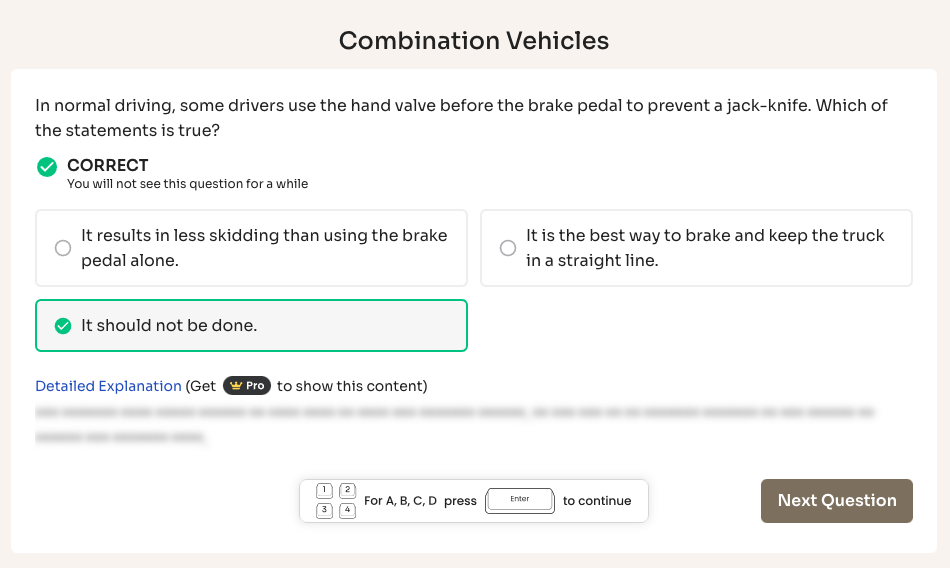
Air brakes test
The air brake test is required to ascertain that you know the mechanics and safety procedures for vehicles with air brake systems in Class A, B, or C CDL. Here’s how you can study for it effectively:
- Know the components of the air brake system: Among the main parts of an air brake system are the compressor, governor, service brake, and emergency systems. Study each of them and know their functions, as most of the test questions are targeted at identifying and understanding these components.
- Know how air brakes work: Go over how air is compressed and stored in the system, and how it’s used to apply brakes. Knowing this process helps answer questions about potential failures of the system or how to manage common issues.
- Learn airbrake inspection procedures: Pay close attention to the daily airbrake check procedures, including the air leakage rate test, low air-pressure warning test, and spring brake test. These safety checks are commonly on the test and are very important for ensuring the brakes remain functioning safely.
- Memorize key safety thresholds: Pay particular attention to pressure limits and times, such as maximum air pressure and air leakage rate that can be accepted. Flashcards will be quite effective in remembering these particular numbers and limits.
Take the CDL air brakes practice test here!
A sample air brakes question is as follows:

CDL endorsements study guide
Some CDL holders may also need special endorsements for other classes of vehicles. Each one of those endorsements requires special preparation for its test:
Passenger (P)
The P endorsement questions test your knowledge concerning safe operation when transporting passengers, such as operating buses. Here’s how you should study:
- Passenger safety procedures: Learn how to conduct a pre-trip inspection on a passenger-specific vehicle including an emergency exit check, seating, and door mechanisms. Questions often pertain to the safety of the passengers and whether the system is functioning properly.
- Loading and unloading rules: Discuss rules and procedures for safe loading and unloading of passengers, especially in high-traffic areas and around schools. Discussion should include proper use of signals and the need to check that all passengers are on/off the vehicle before moving.
- Emergency operating procedures: This section will cover procedures to follow in the event of an emergency with your passengers. This covers what to do in the event of a breakdown, or evacuation, and how to handle disruptive passenger behavior. Safety procedures for each of these situations exist and are discussed in great detail.
- Passenger vehicle rules: This section covers special rules that pertain only to passenger carrying. This includes how many people can be carried in the vehicle, actions prohibited while carrying passengers, and special regulations regarding certain groups, such as school children.
Take the CDL passenger vehicles practice test here!
A sample P endorsement question is as follows:
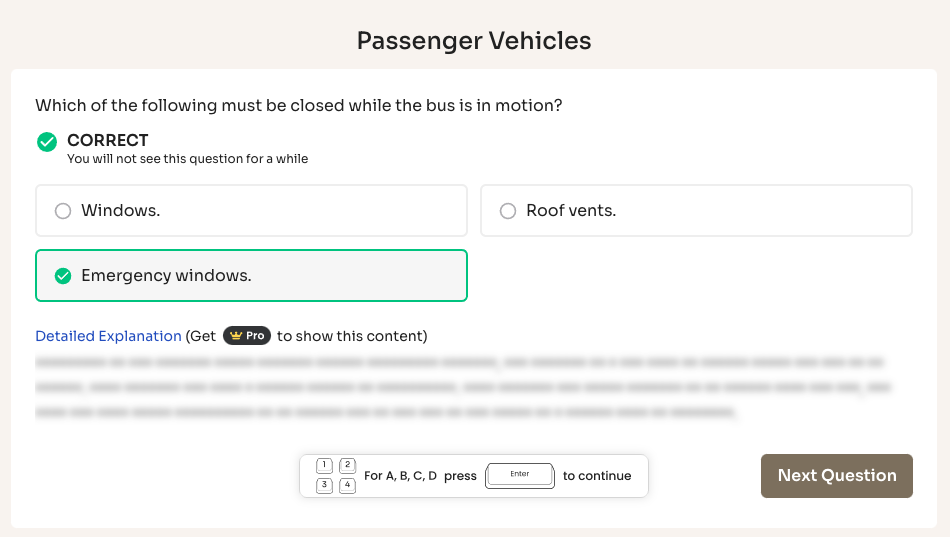
Hazardous material (H)
The H endorsement test is designed to ensure that you have knowledge of the regulations and practices for the safe transportation of hazardous materials. Here’s how you can prepare effectively for this:
- Study the hazardous materials regulations: Study federal and state regulations concerning the transportation of hazardous materials, including their labeling, loading and unloading procedures. These mentioned legal areas are often the focal point of the test so that safe handling can be said to be well-covered.
- Know the hazard classes and labeling: Understand various classes of hazardous materials, such as flammable, corrosive, toxic, etc., and what labels and placards are required for each. These are essential in identifying materials and responding properly to an incident.
- Emergency procedures: Follow the procedures for spills, leaks, or other hazardous incidents; note the action to be taken and whom to call in an emergency. Understand how to handle emergencies with hazardous materials in a safe manner and report them.
- Reread safe transport practices: How vehicles should be inspected, how to drive safely with hazardous cargo, and where particular types of cargo can and cannot be transported. Learn about special routes that can be used, stops, and how materials should be handled.
- Memorize key limits and safety numbers: Particular information such as maximum load limits, distance between items, and temperature range often appears on tests; put these crucial numbers on flashcards for study.
Take the CDL HazMat practice test here!
A sample H endorsement question is as follows:
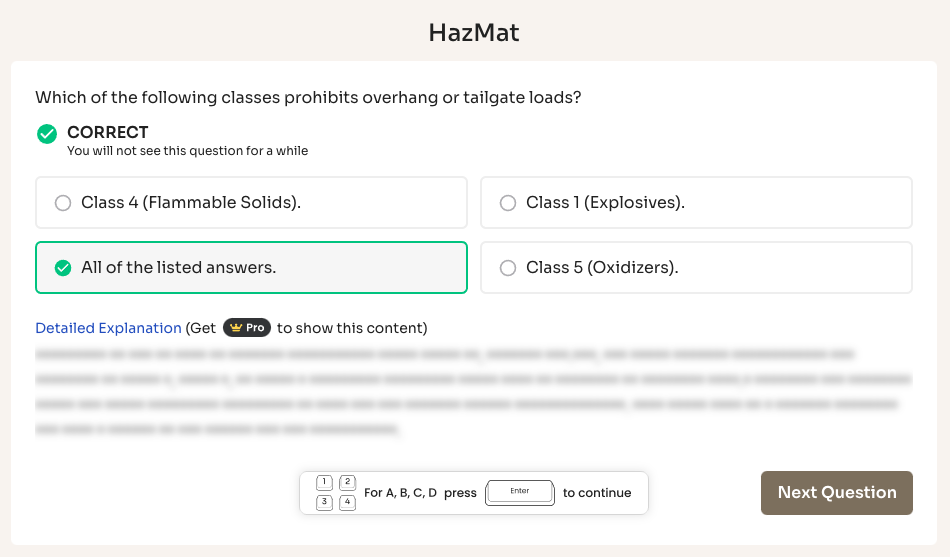
Tank vehicle (N)
The N endorsement tests your knowledge of the special hazards and safety practices of driving a tank vehicle (a vehicle designed to carry any liquid or gaseous material within a tank). Here’s how to prepare:
- Liquid surge and how to handle it: Learn how liquid surge (the forward motion of liquid within the tank) affects how your vehicle handles. Learn how to control a surge by braking and accelerating carefully since it is especially hazardous when driving around a curve or stopping.
- Know your tank types and their uses: To learn about different types, such as bulkheads and baffled tanks, and how each design affects the stability and handling of the liquid cargo in transport. Questions often cover the purpose of these designs and when each is used.
- Special driving techniques: Safety driving techniques for tank vehicles. For instance, turns must be made more gradually, and sharp turns that might cause a shift in the load must be avoided. Inside the tank, the weight of the liquid is constantly shifting; therefore, handling the vehicle requires extra care.
- Key load limits and regulations: Remember the maximum limits of load, partial load and its consequences, and legal requirements for securing various liquids. Knowing this will also help with the test questions that ask about proper transport and compliance.
Take the CDL Tanker Vehicles practice test here!
A sample N endorsement question is as follows:
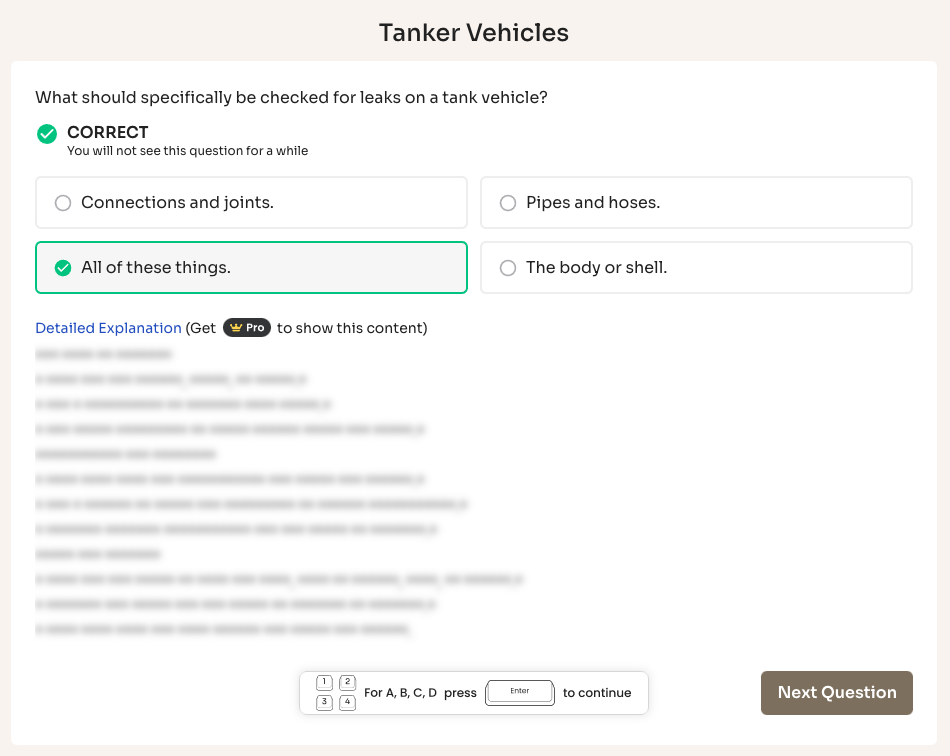
School bus (S)
The S endorsement test is given to verify that the driver knows the regulations, safety practices, and responsibilities involved in the transportation of children by school bus. Here’s how to study effectively:
- Learn passenger safety and loading procedures: School bus drivers have the responsibility for keeping young passengers safe. Note how to safely load and unload a bus, including signals used, making sure all passengers are clear of the bus before moving it, and knowing about “danger zones” around the bus.
- Know the traffic laws and special rules for school zones: When operating near schools or residential areas, school buses need to follow additional rules. Learn the specific laws that outline when to stop at railroad crossings, use school zone speed limits, and when to use lights and signals. Learn about the proper ways to approach intersections and crosswalks in a school environment.
- Know the emergency procedure: This is one of the most important parts of the test in preparation for emergencies. Learn the steps involved in the safe evacuation, such as calmly directing students, using emergency exits, and handling disabled or special-needs passengers. Be prepared to answer different questions about various emergency situations and the appropriate reactions to them.
- Managing student behavior: Safety in safe school bus operations begins with the management of student behavior. Review techniques for maintaining order, handling disruptions, and responding to incidents while driving. Questions may cover strategies for keeping students safe and focused during transport.
Take the CDL School Bus practice test here!
A sample S endorsement question is as follows:
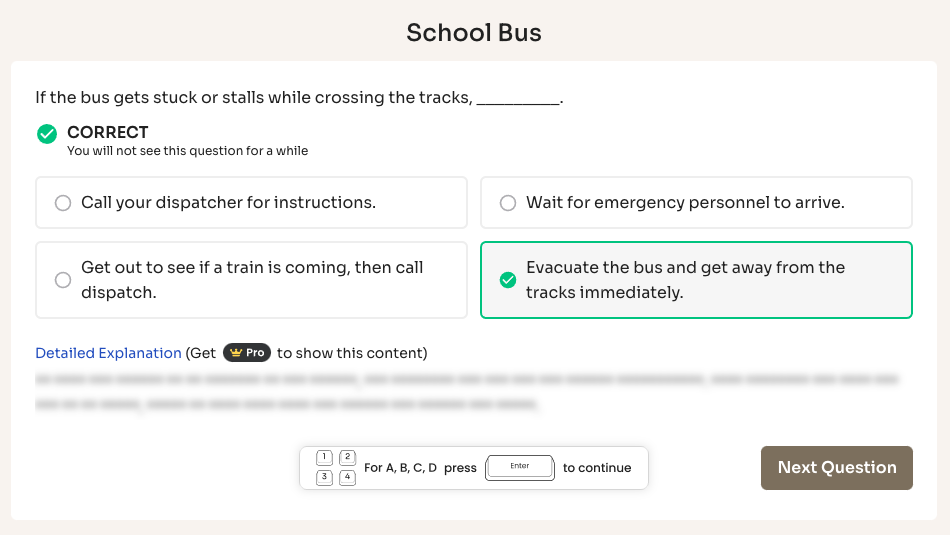
Doubles/triples (T)
The T endorsement test covers the knowledge needed to safely operate double or triple trailers. Here’s an effective way to prepare for it:
- Understand the mechanics of doubles and triples: Study how multiple trailers couple and uncouple; understand the differences in trailer connections and how maneuvering a longer vehicle becomes increasingly complex.
- Learn to drive safely: This section will help you focus on how to drive safely with doubles and triples. It includes making wider turns, managing increased length, and handling longer stopping distances. You’ll need to know how to control the vehicle when the trailers are loaded, or when the driving conditions change.
- Know how to handle jackknifing: Go over how to avoid and correct jackknifing, a potential hazard when towing double or triple trailers. You should know how to make gradual turns to avoid sudden stops and how to adjust in driving with the distribution of the load.
- Understand unique/special restrictions and laws: Understand special laws and regulations related to the operation of doubles and triples, such as length of vehicle restrictions, limitations on the use of roads, and requirements for proper securing of the trailers.
Take the CDL Double/Triples Trailers practice test here!
A sample T endorsement question is as follows:
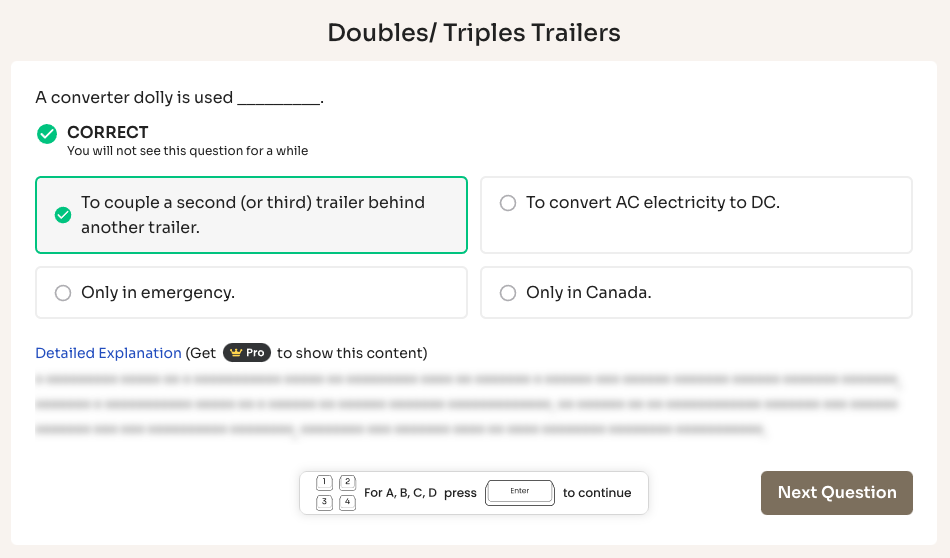
Tank & Hazmat (X)
To get the Tank & Hazmat (X) endorsement, you’ll need to take and pass both separate Hazardous Materials (H) and Tank Vehicle (N) knowledge tests. In other words, you will not only have to study hazardous materials transportation regulations in general, such as the classification of hazardous materials, placarding, and emergency procedures but also particular handling and safety measures concerning tank vehicles, including liquid cargo management, surge prevention, and proper inspections.
After successfully passing these two tests, you will have proved your capability to transport hazardous material in a tank vehicle and will qualify for an X endorsement.
CDL skills tests study guide
The CDL skills tests will be the final challenge once you obtain a CLP for at least 14 days. You are expected to demonstrate your ability to operate and drive safely your vehicle in the real world. Your guidance for three parts was broken down below:
Pre-trip vehicle inspection
The pre-trip vehicle inspection is a major part of the CDL skills tests. To learn and perform this part effectively, follow these steps:
- Familiarize yourself with the areas to be inspected: engine, brakes, tires, lights, and emergency equipment.
- Break it down into sections to cover: the engine compartment, wheels and tires, brakes, lights and signals,…
- Make it a habit: Develop the habit of using a pre-trip inspection checklist to ensure you don’t forget to check anything.
- Practice out loud: In practice inspections, say what you are doing and what you find out loud because you will be required to articulate the process during the test.
- Take a practice: Practice the inspection procedure on many different vehicles a number of times to keep familiarizing yourself with the steps involved. It will also speed you up and make you more accurate. You also can do a practice test through online multiple-choice questions to boost more confidence before inspecting a real vehicle.
Take the CDL Pre-trip Inspection practice test here!
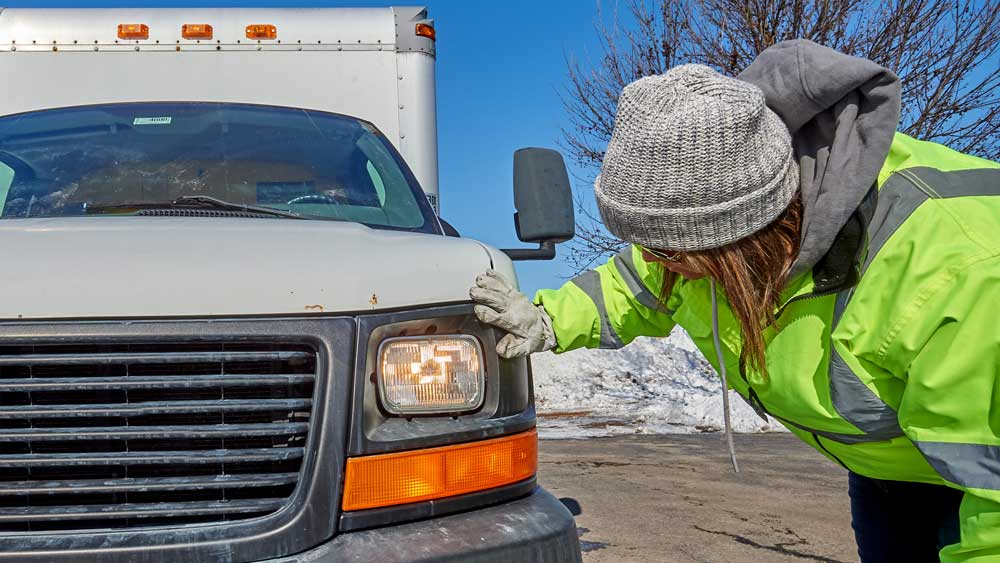
Basic vehicle control
The basic vehicle control test is an essential aspect of the CDL skills test that will involve your ability to control the vehicle for different driving situations. Since you need to be appropriately prepared for this part of the test, you should do it in the following way:
- Understand important maneuvers: There are usually three common maneuvers included in the test, which include backing in a straight line, tight turns, and parallel parking. Understand the steps for proper completion of each maneuver, hand positioning, and effective use of mirrors.
- Practice in a safe environment: Using cones or markers, create a small obstacle course to reflect the conditions of the test. Work on smoothly controlling your vehicle while reversing, turning, or parking. Go slow and practice smoothly to build confidence.
- Knowing the dimensions of the vehicle: Know the actual size of the vehicle and the turning radius that you will be using for the test. Knowing the dimensions of the vehicle will help you to make accurate turns without touching any obstacles.
- Stay calm and focused: On test day, remain calm and take your time. For maneuvers, do not rush through; instead, take your time for smooth, controlled movements. Precision is more important than speed.
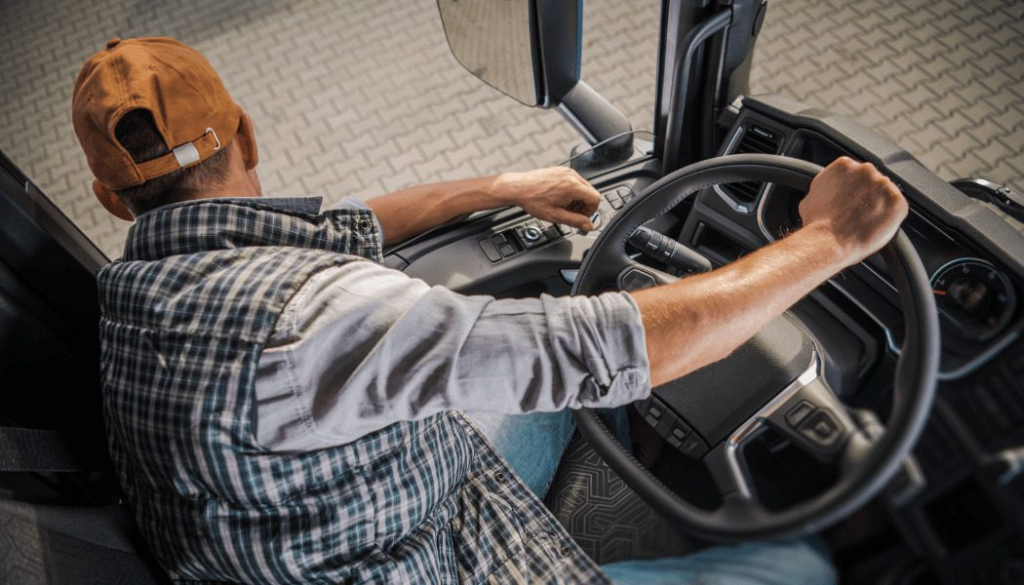
On-road test
The on-road test is the last step of the CDL skills test, where you will be required to demonstrate your capability to safely drive the vehicle under normal traffic conditions. To prepare for this part, the major areas of concentration are:
- Know the road rules: Learn about road signs, signals, speed limits, stopping, and right-of-way for passing. Learn how to make turns at intersections, how to safely merge with traffic, and how to follow road signs.
- Practice defensive driving: Increase focus on safe driving, such as maintaining a safe following distance, frequent mirror checks, and keeping an eye on the road for possible hazards. Be more proactive about road safety to pass this part of the test.
- Smooth control: Practice vehicle smooth control such as lane changes, turns, and stops. Make sure you are comfortable with acceleration, braking, and gear shifting if using a manual transmission-operating the vehicle smoothly.
- Stay cool and confident: While taking a test, stay cool, and drive defensively. Never be in a hurry, keeping in mind that the examiner looks for safe and controlled driving, not necessarily at a high speed.
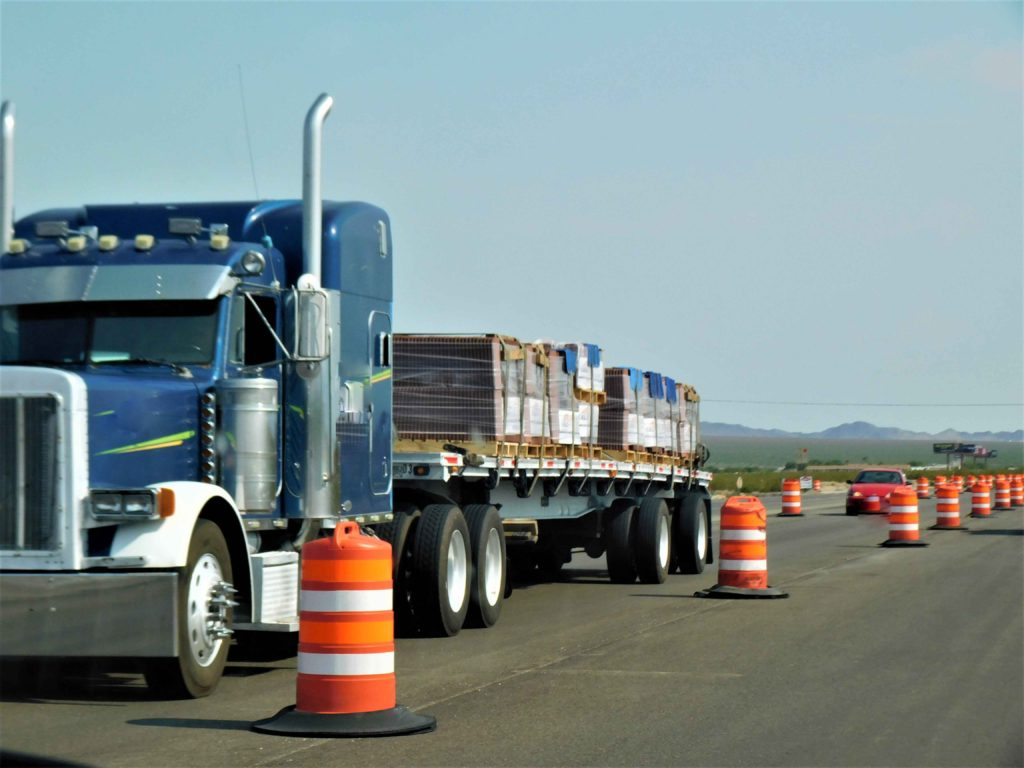
FAQs
1. Is the CDL study guide worth it?
Yes, a CDL study guide is indispensable in preparation for both written tests and skills tests. It provides organization for the information you will need to know, and practice questions and tips prove helpful in passing the exams.
2. Which CDL study guide is the most effective?
The best study guide in CDL is one that is up-to-date, comprehensive, and specifically attuned to the particular needs of your state. You can consider study guides that include practice tests, their explanations, and a thorough breakdown of each section.
3. Where can I get a CDL study guide book?
You can purchase a CDL study guide book at a bookstore, online retailer, or through your state’s DMV. Many of these resources are variously available in both physical and digital formats.
Final thoughts
In fact, passing all your CDL tests and getting your commercial driver’s license is a huge milestone in your career. With the right preparation, you’ll feel confident going into every challenge. Keep in mind that continued practice, understanding the depths of the CDL study guide, and a composed and attentive attitude are what bring success. Whether you’re trying to get your initial CDL or adding an endorsement to your value, the investment put into studying now will pay dividends down the line. Jump-start your journey today and unlock numerous opportunities with a CDL that can drive you toward a brighter and more promising career.


